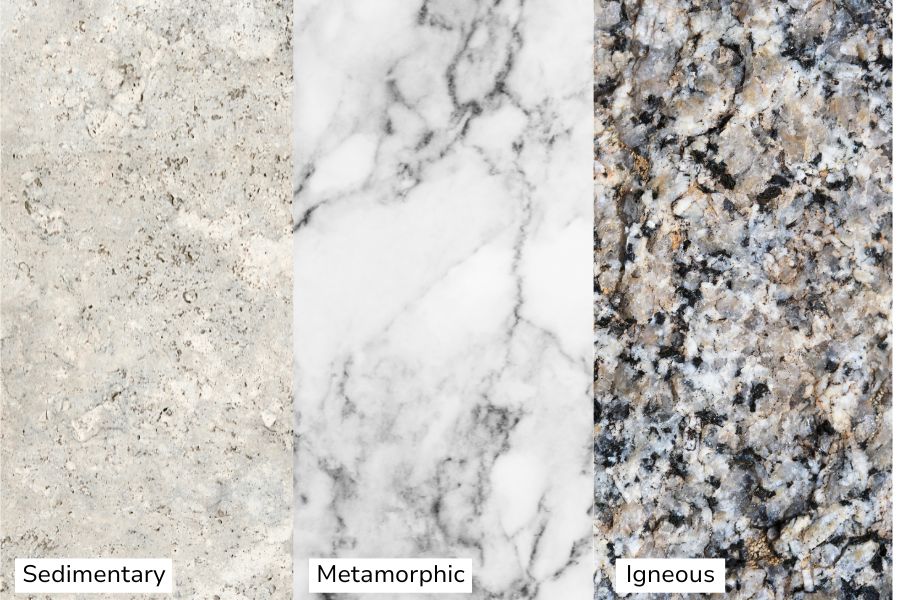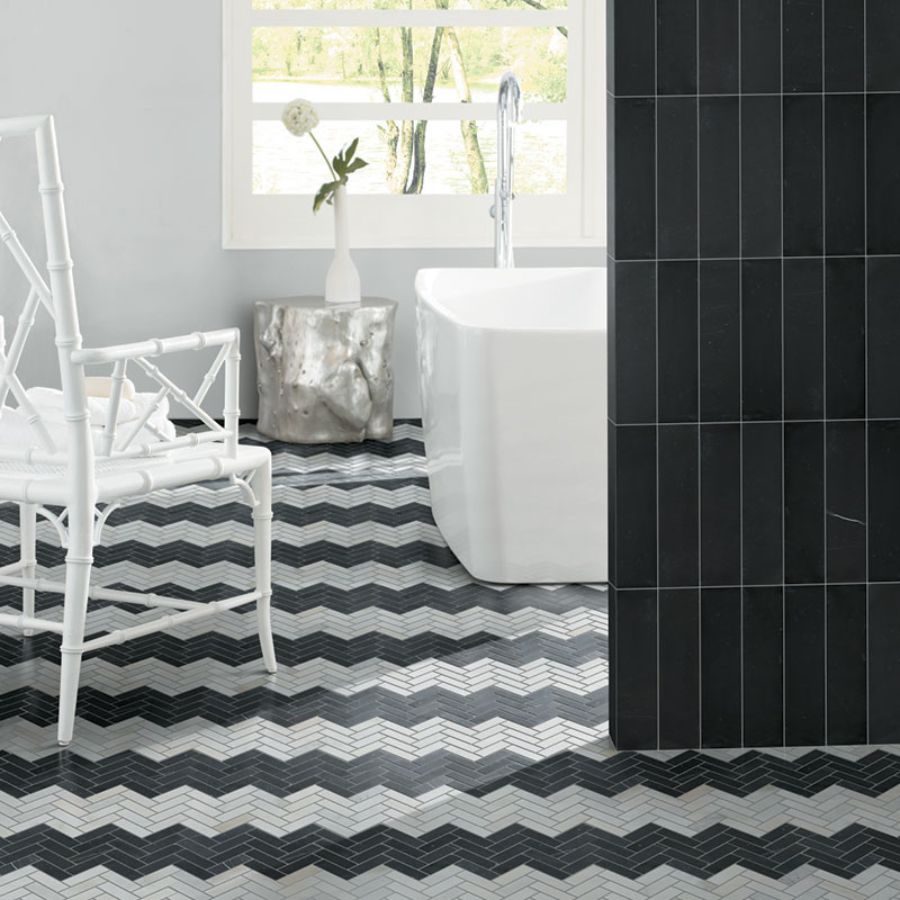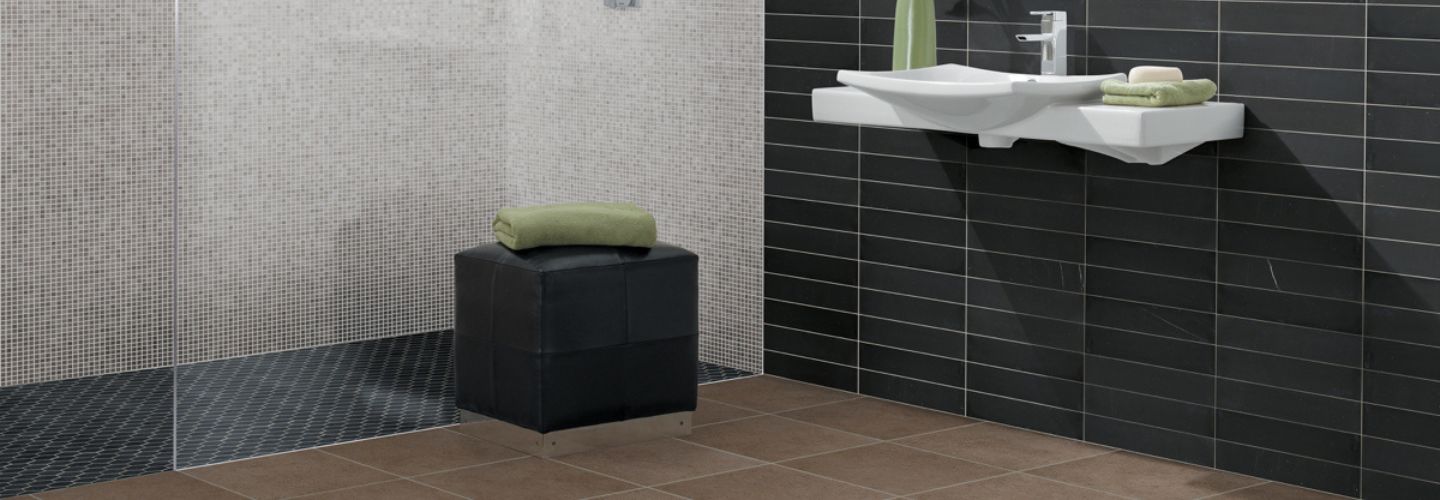Tile Tech Understanding and Taking Care of Your Natural Stone Tiles, Floors, Walls, and Countertops
Sep 30, 2023September 30, 2023
Not all natural stone tiles, floors, walls, or countertops should be treated equally. Whether you’ve installed natural stone in your home or a commercial building, this beautiful material can last forever, giving you many years of service if you take care to preserve its beauty. When it comes to proper care and maintenance of natural stone, it’s crucial to understand your stone’s composition, geological classification, and finish.
Getting to Know Your Stone
Geological Classification
 There are three geological classifications of natural stone: sedimentary (limestone, sandstone, anthracite), metamorphic (marble, slate), and igneous (granite, basalt).
There are three geological classifications of natural stone: sedimentary (limestone, sandstone, anthracite), metamorphic (marble, slate), and igneous (granite, basalt).
Composition

Natural stones are classified into two categories according to their composition. The stones in each of the three geological classifications are either siliceous or calcareous.
Siliceous stone is made up of primarily silicates such as quartz, mics, and feldspar, and it’s quite durable and resistant to most acids you’ll encounter in a kitchen. That means lemon and orange juice or tomato sauce spills aren’t the kiss of death for your siliceous stone countertops or floor tiles. But this doesn’t mean it’s okay to use harsh acidic cleaners because the stone might contain trace levels of minerals that are sensitive to acid. Siliceous stones include granite, slate, sandstone, quartzite, brownstone, soapstone, and bluestone.
Calcareous stone is comprised of mostly calcium carbonate, a compound also found in pearls and shells. Unlike siliceous stone, you generally do not want anything acidic sitting on your countertop for long. And definitely avoid acidic cleaning solutions. Calcareous stones include marble, travertine, limestone, and onyx.
Natural Stone Finishes
 Yin + Yang Natural Stone Tile
Yin + Yang Natural Stone Tile
There are many finishes that can be applied to natural stone tiles and surfaces. Different finishes affect the visual impact, usability, and performance.
Polished stone finishes are glossy and light-reflective. They are smooth, uniform, and have a luxurious, high-end aesthetic. For some natural stones, the abrasion process of polishing the stone lowers its porosity, making it resistant to spills, especially when sealed. Scratches, however, are highly visible on polished surfaces. Polished stones will make a beautiful statement on walls, countertops, backsplashes, and living room floors, but the slippery surface isn’t safe for outdoor spaces or bathroom floors. Marble, granite, limestone, and travertine are good candidates for polishing.
Honed stone finishes have a smooth, matte, or satin look with little light reflection. The effects range from dull to a soft sheen but not shiny. Honed natural stones have a contemporary, elegant, and understated look. Honed finishes are a beautiful option for countertops, and they are preferred for natural stone floors, thresholds, and other locations where heavy traffic would dull the polished finish.
Flamed stone finishes are rough-textured and achieved with a flame applied at a 45-degree angle. The heat makes the crystals pop, giving the stone a deeply textured surface. Highly crystallized stones such as quartz, granite, and limestone are suitable for a flamed fish.
Leathered stone finishes make, as the name implies, look like leather. The surface is textured and pebbly to the touch. You'll also find tiny pits and fissures. The texture of leathered stones can vary, but the finish is not shiny at all, and it has more depth than a honed finish. Leather-finished stones are ideal for bathrooms, fireplace surrounds, and bar tops. Granite is the best candidate for leathering, but quartzite and some marbles can be leather-finished.
Bush-hammered stone finishes are achieved by hammering the stone in such a way that the top layers break to create ridges and pockets. The result is a naturally rough texture that looks as though it was chiseled by hand centuries ago. Bush-hammered finished stones make for handsome exterior cladding.
Many other finishes are available. Consult with a stone professional if your finish does not match the above.
Natural Stone Care Tips
 American Moden Arts Marble Floor & Wall Tile
American Moden Arts Marble Floor & Wall Tile
Basic Cleaning for Natural Stone
- Remove loose debris and blot spills (wiping spreads the spill).
- Clean stone surfaces with a neutral cleaner, stone soap, or a mild liquid dishwashing detergent and warm water (there are many products available for stone cleaning)
- Rinse thoroughly, and change rinse water frequently.
- Dry with a soft cloth.
Do not use these products on your natural stone:
- Products containing lemon, vinegar, or other acids may dull or etch calcareous stones.
- Scouring powders or creams containing abrasives can scratch certain stones.
- Rust removers that contain hydrofluoric acid attack silicates and other minerals.
Removing Stains from Natural Stone
First, you must identify the stain before tackling the removal of it. Stains can be oil-based, organic, metallic, biological, ink-based, paint-based, or acid-based. Not sure what kind of stone stain it is? Then, you’ll have to do some detective work. You can probably discover the likely stain-causing culprit by considering where the stain is located, the color and shape of the stain, and what occcurs in the area of the stain.
Oil-Based Stains on Natural Stone

Grease, cooking oil, cosmetics, tar, and milk are common oil stains that can darken the stone and most likely need to be chemically dissolved. Gently clean with regular household detergent, ammonia, mineral spirits, or acetone.
Organic Stains on Natural Stone
 Food, fruit, wine, coffee, tea, bird droppings, leaves, and bark can leave a pinkish-brown stain. If it doesn’t disappear when the source of the stain is removed, clean it with hydrogen peroxide and a few drops of ammonia. Outdoors, sun, rain, and little time will bleach out the stains.
Food, fruit, wine, coffee, tea, bird droppings, leaves, and bark can leave a pinkish-brown stain. If it doesn’t disappear when the source of the stain is removed, clean it with hydrogen peroxide and a few drops of ammonia. Outdoors, sun, rain, and little time will bleach out the stains.
Biological Stains on Natural Stone
Biological stains like algae, mildew, moss, lichens, and fungi can be removed with 1/2 cup of any of these household chemicals mixed with a gallon of water: bleach, ammonia, or hydrogen peroxide (don’t mix bleach and ammonia!).
Water Spots and Rings on Natural Stone

When hard water accumulates on some stones, water spots or rings can be left behind. Buff them out with 0000 steel wool.
Etch Marks on Natural Stone
 When acids are left on calcareous stones, you’ll often be left with an etch mark, or both an etch mark and a stain. If there’s a stain, first remove it using one of the methods above and then tackle the etch marks with water and marble polishing powder. Rub the powder with a cloth or buffing pad until the etch mark disappears. For deep etching, contact a professional stone restorer for refinishing or repolishing etched areas.
When acids are left on calcareous stones, you’ll often be left with an etch mark, or both an etch mark and a stain. If there’s a stain, first remove it using one of the methods above and then tackle the etch marks with water and marble polishing powder. Rub the powder with a cloth or buffing pad until the etch mark disappears. For deep etching, contact a professional stone restorer for refinishing or repolishing etched areas.
Smoke and Fire Damage on Natural Stone
 A thorough cleaning may remove smoke or fire-stained fireplaces, but if there’s etching (due to the acids in the smoke), look for a commercially available smoke remover.
A thorough cleaning may remove smoke or fire-stained fireplaces, but if there’s etching (due to the acids in the smoke), look for a commercially available smoke remover.
Ink Stains on Natural Stone

On light-colored natural surfaces, remove ink with hydrogen peroxide or bleach. On dark stone surfaces, use acetone or lacquer thinner.
Metal Stains on Natural Stone

Iron or rust stains are orange-brown in color and leave the shape of the staining object. You will need to use a poultice to remove metal stains, but some metal stains may be permanant. Poultice materials include kaolin, diatomaceous earth, powdered chalk, white molding plaster, and talc. You can also purchase a premixed poultice that only requires adding water.
Paint Stains on Natural Stone

Remove small paint spill s with a razor or laquer thinner. large pain spills will require a commercial paint stripper.
Designer Tool Kit

Check out our Deisgner Tool Kit that offers commercially avialable quick fixes for tile and stone stains and other other common issues.
Learn More About Natural Stone
Want to learn more about natural stone?The tile pros at Crossville Studios’ 27 dedicated showrooms are ready to answer all your questions about natural stone tiles, floors, walls, and countertops! Reach out to the showroom nearest you, or contact us today!


